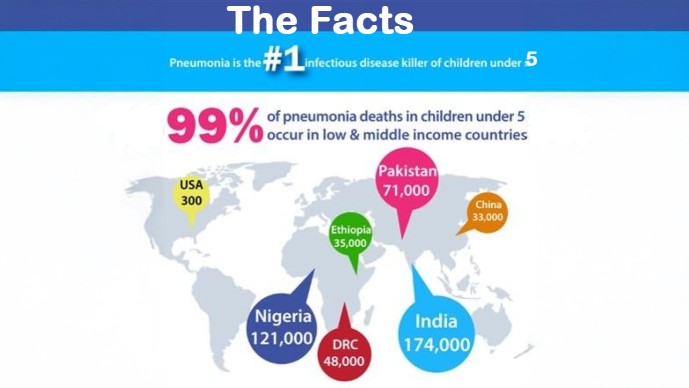
When we think of a young child with pneumonia, we almost always think of this infection of the lungs as something acute which needs close attention and treatment. Often however, an episode of pneumonia is the tip of a large iceberg. It is the end result of a child at increased risk of infection where the underlying reason is malnutrition. Malnutrition can refer to over - or under - nutrition; and in the case of where the Bill & Melinda Gates Foundation is working to contribute to decreased childhood pneumonia mortality, it is the latter. It is not only a matter of a child getting fewer calories than she needs but also includes chronic undernutrition resulting in lower than expected height for a given age (stunting), more acute undernutrition resulting in lower than expected weight for a given age (underweight) or for a given height (wasting), or inadequate micronutrients which can limit the body’s immune system from effectively protecting against or fighting an infection.
For a long time, undernutrition has been thought of independent of the infections to which it contributes. This point struck me most clearly on my way to work at the Pediatrics ward of a large hospital in Lusaka, Zambia as part of a pneumonia research project, where every day I would walk by a separate building entirely focused on undernourished children. Children needing pneumonia treatment never came from this building and at the time it seemed that if you were a child you could only have malnutrition (go to building A) or pneumonia (go to building B). If we hope to see fewer children dying of pneumonia in the next 15 years, the same way we have in the previous 15, we will need to pay more attention to this overlap and the role of undernutrition in pneumonia.
An undernourished child is so common in communities and clinics where our partners work that this diagnosis is rarely considered as needing special attention. Yet such children need more than just the basic treatment. They may need more appropriate feeding, adequate nutrients to support a functioning immune system, closer attention to their response to treatment and more follow-up visits. These can only be achieved with easy to use, effective tools that can help identify children in this high risk group in the first place and ideally do so early on in their course of illness. It is for this reason that a primary focus of this round of Grand Challenges in Global Health is on improved tools for assessment of malnutrition in sick children. This need is not a new realization and much has been done to further this aim already with mid-upper arm circumference measurements and the Integrated Management of Childhood Illness guidelines. Our hope is that by again putting the spotlight on the intersection of malnutrition and acute life-threatening illness such as pneumonia, we will encourage innovation in targeting appropriate care for sick and undernourished children.
Have a great idea? Apply online now. Only two pages to fill out.